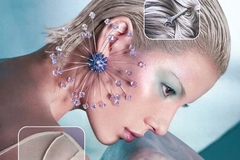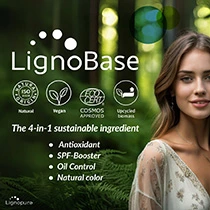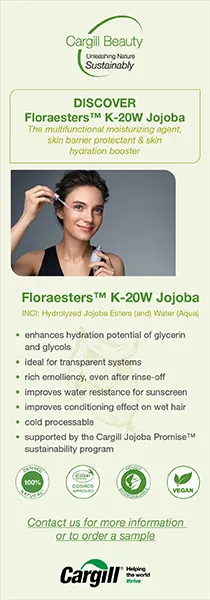Bamboo biomass named a dual-solution for acid detection and cosmetic wastewater treatment

A study finds nano-biochar — a nanostructured carbon material derived from bamboo — to be an effective solution for detecting ferulic acid in personal care formulations and removing surfactants from cosmetic manufacturing wastewater.
Researchers from the China Three Gorges University, Wuhan University, China, aimed to develop a cost-effective and environmentally friendly method to improve product quality and wastewater treatment in the cosmetic industry.
Personal care companies are being pushed to make more environmentally friendly choices as consumer awareness about ecologically harmful manufacturing processes grows. Market researcher Innova Market Insights’ data indicates that 37% of global consumers who prioritize sustainability claims in personal care do so primarily for environmental reasons.
Researchers are developing solutions like nano-biochar to ensure sustainability reaches every production stage as consumer expectations for ethical operations behind the scenes are rising.
Bamboo-based solutions
Cosmetic manufacturing produces wastewater containing surfactants like sodium dodecyl sulfate (SDS) and cetrimonium bromide (CTAB). Surfactants are chemicals added to cosmetic formulations to degrease and emulsify oils and fats, allowing them to be washed away. They are commonly found in cleansing products like shower gels and shampoos. If these ingredients are not treated properly they can cause environmental pollution.
To create nano-biochar, the researchers heated bamboo biomass in a process called pyrolysis, then chemically activated the biomass using potassium hydroxide to enhance properties and enlarge its surface area.
They grounded the resulting biochar nano-sized particles (less than 100 nanometers). This process produced a highly porous material, which the researchers found effective for detecting the acid and trapping the surfactants.
Removing surfactants
The study found that nano-biochar exhibited high adsorption capacity, removing up to 416.7mg of SDS and 454.5mg of CTAB per gram of material.
.jpg) Nano-biochar combats water pollution from cosmetic wastewater.The removal reached an equilibrium within 120 minutes. The researchers also determined the optimal conditions for maximum surfactant removal, with pH 4.0 being ideal for CTAB (96.5% removal efficiency) and pH 6.0 for SDS (93.2% removal efficiency).
Nano-biochar combats water pollution from cosmetic wastewater.The removal reached an equilibrium within 120 minutes. The researchers also determined the optimal conditions for maximum surfactant removal, with pH 4.0 being ideal for CTAB (96.5% removal efficiency) and pH 6.0 for SDS (93.2% removal efficiency).
Additionally, nano-biochar proved reusable, as it could be regenerated and reused multiple times without losing effectiveness.
These findings suggest that nano-biochar is a promising, eco-friendly alternative to conventional wastewater treatment methods.
Ferulic acid detection
In addition to removing surfactants, nano-biochar was tested for its ability to detect ferulic acid in product formulations.
The cosmetic industry relies on various chemical ingredients, including ferulic acid, a natural antioxidant commonly used in skin care products. While it is beneficial for skin health in specific amounts, ferulic acid can be harmful in high concentrations, making monitoring its levels in cosmetic formulations essential.
The researchers modified a glassy carbon electrode (GCE) with nano-biochar to create a nano-biochar GCE sensor. This sensor was tested using differential pulse voltammetry, a technique that measures electrical signals to detect the presence of specific chemical compounds.
The sensor proved highly sensitive and detected ferulic acid at very low concentrations. It also showed good selectivity, meaning it was not affected by similar compounds, such as ascorbic and caffeic acids.
The sensor showed highly accurate measurements when tested on real cosmetic samples, such as face creams and cleansing lotions, with recovery rates between 96.5% and 102.8%. These results indicate that the nano-biochar GCE sensor could be an effective and reliable tool for quality control in the cosmetics industry.












